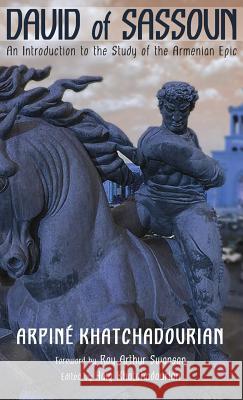David of Sassoun » książka
David of Sassoun
ISBN-13: 9781498220415 / Angielski / Twarda / 2016 / 86 str.
David of Sassoun
ISBN-13: 9781498220415 / Angielski / Twarda / 2016 / 86 str.
(netto: 132,12 VAT: 5%)
Najniższa cena z 30 dni: 137,59
ok. 16-18 dni roboczych
Bez gwarancji dostawy przed świętami
Darmowa dostawa!
The Armenian folk epic David of Sassoun was performed and transmitted orally for over one thousand years before a variant was discovered and transcribed in 1873. The publication of this variant marks the beginning of a long period of discoveries of other variants. The fifty variants collected by1936 are the source of the epic's unified text. The action of the epic is centered on the preservation of the House of Sassoun, or freedom from invaders. The oaths taken by heroes create conflicts of loyalties that work against this central concern. The curse, another form of the oath, leads to the decline of the House of Sassoun. The father's curse, which condemns the son to barren immortality, also puts heroic life in suspension until the eschatological vision is realized. Arpine' Khatchadourian (1925-2012) received her B.A. and M.A. in Comparative Literature, A.B.D. English and American Literature, at the University of Wisconsin-Milwaukee. She was a part-time lecturer in the Department of Comparative Literature.
The Armenian folk epic David of Sassoun was performed and transmitted orally for over one thousand years before a variant was discovered and transcribed in 1873. The publication of this variant marks the beginning of a long period of discoveries of other variants. The fifty variants collected by1936 are the source of the epic's unified text. The action of the epic is centered on the preservation of the House of Sassoun, or freedom from invaders. The oaths taken by heroes create conflicts of loyalties that work against this central concern. The curse, another form of the oath, leads to the decline of the House of Sassoun. The father's curse, which condemns the son to barren immortality, also puts heroic life in suspension until the eschatological vision is realized. Arpine' Khatchadourian (1925-2012) received her B.A. and M.A. in Comparative Literature, A.B.D. English and American Literature, at the University of Wisconsin-Milwaukee. She was a part-time lecturer in the Department of Comparative Literature.











